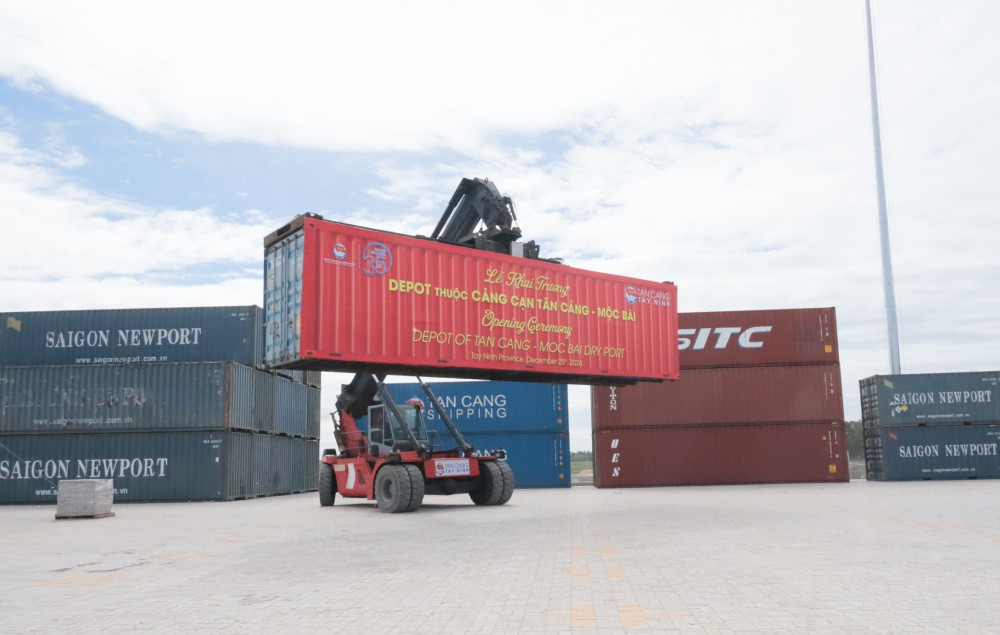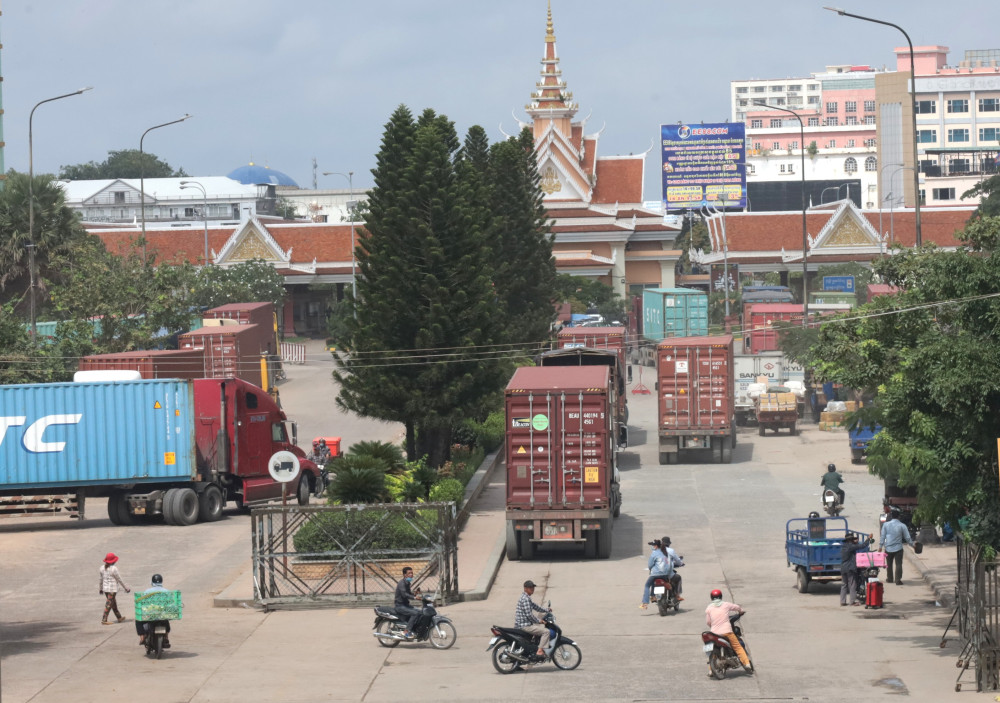Tất cả chuyên mục

Tay Ninh province - with its geographical advantage in a strategic location, bordering three provinces of the Kingdom of Cambodia - is emerging as a potential center for goods transit and border trade. Promoting investment in logistics infrastructure and developing border trade is opening up a sustainable direction for the local economy and the Southeast region.
Vibrant border trade
Tay Ninh has a 368.695km long border, adjacent to Svay Rieng, Tboung Khmum and Prey Veng provinces (Cambodia), with 21 border gates, including 4 international border gates and many main and secondary border gates and traditional trails and openings. Thanks to this feature, the province has favorable conditions to develop border trade economy, promote trade, create jobs and improve the lives of border residents.

Deputy Director of the Department of Industry and Trade Chau Thi Le said that in the first 7 months of 2025, the export and import turnover between Tay Ninh and Cambodia reached over 2 billion USD, accounting for 11% of the total import and export value of the province, up 17% over the same period last year. Of which, exports reached 707 million USD (up 8%) and imports reached 1.3 billion USD (up 23%).
Key export items from Vietnam include: textiles, footwear, machinery and equipment, spare parts, fibers, means of transport, etc. The main imported items are textile materials, footwear, machinery, rubber, cashew nuts, plastic raw materials, etc.
Border trade also recorded impressive figures, with a total import-export value of 3.83 billion USD, along with bustling trading activities of residents at border markets, contributing to maintaining the flow of goods.
The whole province has 20 border markets in operation out of 22 markets planned in 14 border communes. Goods exchanged at the markets are diverse - from household goods, food, construction materials from Vietnam to agricultural products and raw foods from Cambodia.
However, up to now, Tay Ninh still has 6 communes without markets (Tan Hoa, Tan Binh, Long Khanh, Long Phuoc, Phuoc Chi and Hoa Hoi), requiring continued investment in completing commercial infrastructure to meet the needs of exchanging goods, serving people's lives and economic development.
According to Vice Chairman of the Provincial People's Committee Nguyen Hong Thanh, after the merger, Tay Ninh province has a very special geographical position, as a bridge between the Southeast and Southwest regions and the two economies of Vietnam and Cambodia. In 2025, the province's economic scale is estimated to reach over 352,000 billion VND, growing by 9.3%, belonging to the group of 10 localities with the largest economic scale in the country. The province has an attractive investment environment, ranking 3rd in the country in terms of provincial competitiveness in 2024.
To date, the whole province has over 37,000 operating enterprises with a total registered capital of over 912,000 billion VND; more than 3,000 domestic investment projects with registered capital of nearly 689,000 billion VND; and 1,892 foreign investment projects with a total registered capital of over 24 billion USD. Every year, the province's export activities achieve positive results.
| In the first 7 months of 2025, the export and import turnover between Tay Ninh and Cambodia reached over 2 billion USD, accounting for 11% of the total export and import value of the province, up 17% over the same period last year. Of which, exports reached USD 707 million (up 8%) and imports reached USD 1.3 billion (up 23%). |
Forming an international border trade and logistics center
By 2030, Tay Ninh has identified border trade as a key driving force for socio-economic development. The province aims to become a transit center for export and import goods of the Southern Key Economic Zone, connecting Cambodia, Laos, Thailand and ASEAN.
In this development strategy, border gate economic zones such as Moc Bai and Xa Mat will receive strong investment to become new growth engines. Notably, the province has submitted to the Prime Minister for approval the master plan for the construction of Moc Bai border gate economic zones until 2045, with an area of over 21,284 hectares; is completing the adjustment of the planning of Xa Mat border gate economic zones with a scale of 34,890 hectares and the Phuoc Tan main border gate project, with a scale of nearly 21 hectares.

Tay Ninh has planned 14 logistics centers with a total area of 1,288 hectares in strategic locations such as Ben Cau, Tan Bien, Can Giuoc, Kien Tuong, etc. At the same time, it prioritizes resources to complete the dynamic axes, expressways, and arterial belt roads, connecting smoothly from industrial parks to seaports; intra-provincial connecting routes, creating smooth connections, helping goods move easily from industrial parks and clusters to seaports and key economic areas, connecting domestic and international goods, optimizing the supply chain, reducing costs and increasing competitiveness.
A number of major projects have been implemented such as the Logistics Reception Area at Long An International Port and the logistics center at Ben Luc—logistics hubs with a scale equivalent to large ports in Ho Chi Minh City.
In addition, the province focuses on improving the competitiveness of logistics enterprises through administrative reform, application of digital technology; supporting enterprises to participate in international fairs and exhibitions; encouraging the application of technology, quality management, joining logistics associations; promoting joint ventures and partnerships to develop closed logistics in industrial parks.
At the same time, the province implements a policy to develop high-quality logistics human resources through training cooperation with institutes and schools and has preferential policies to attract talented human resources to work in the locality.
Promoting investment in logistics infrastructure and developing border trade not only creates a turning point for Tay Ninh but also strongly affirms the province's pioneering role in the country's integration and development, gradually realizing the aspiration to become a new economic growth pole, a key logistics and border service center of the Southeast, contributing to expanding international connections and enhancing Vietnam's position in the ASEAN regional supply chain./.
| By 2030, Tay Ninh has identified border trade as a key driving force for socio-economic development. The province aims to become a transit center for export and import goods of the Southern Key Economic Zone, connecting Cambodia, Laos, Thailand and ASEAN. |
By Minh Duong - Translated by Q. Thien
Ý kiến ()